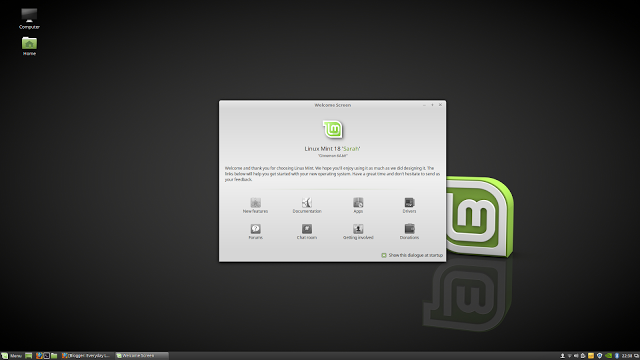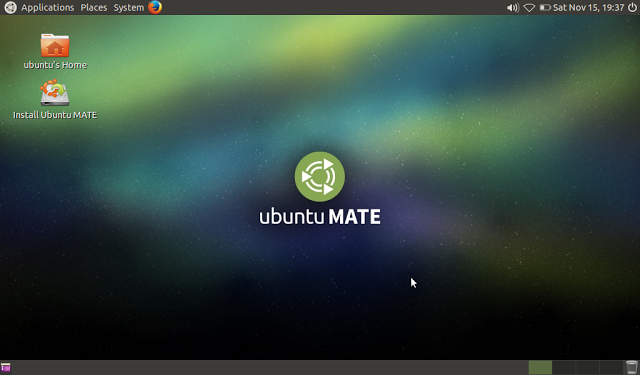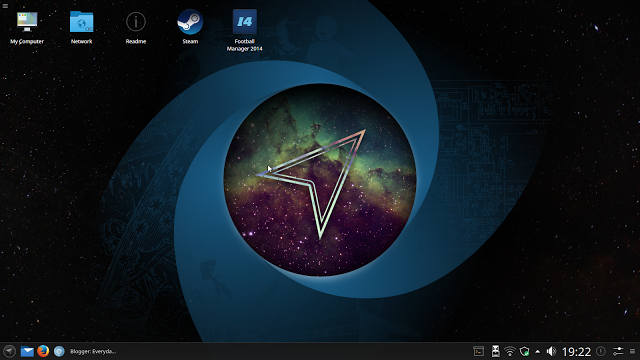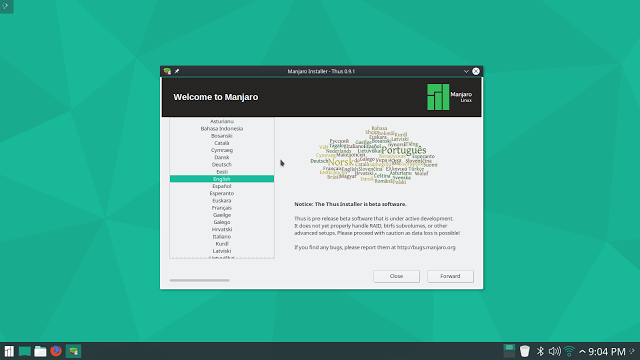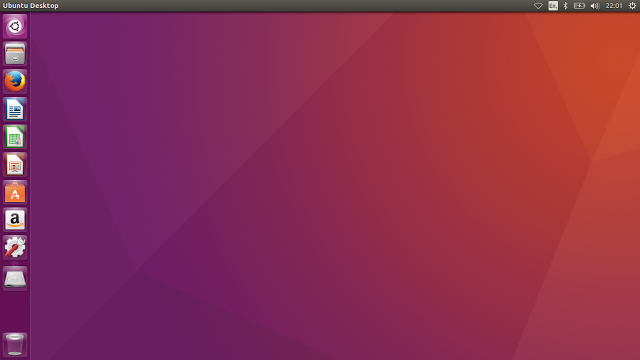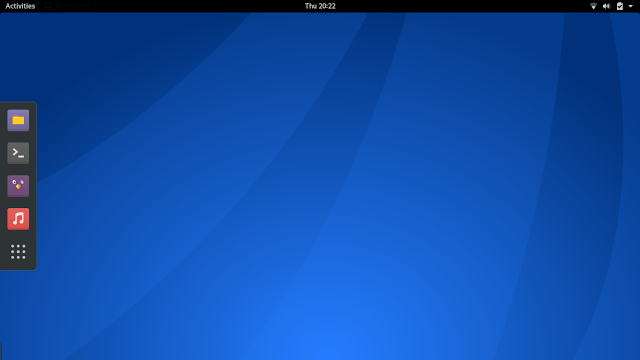Introduction
At the beginning of August I released an article listing the 5 Linux distributions that I would recommend for the Everyday Linux User.
The distributions I listed in the article were Linux Mint, Ubuntu, Peppermint, Manjaro and PCLinuxOS. These are great multipurpose Linux distributions that are easy to install, easy to use and they are updated regularly.
I asked you to submit a list of the distributions you would recommend to the Everyday Linux User. You can continue to submit your list at that site although only the people who have submitted up until the end of August will be considered for the Amazon gift cards.
The response has been really good although many of you submitted a list without saying why you would recommend the distributions.
In this article I am going to analyse the results of the lists that were sent through.
The Most In Depth Submission
The most in depth submission was from David Bley who presented a list containing Lubuntu for lightweight computers, Ubuntu MATE for a main computer and DSL as a tiny Linux distribution.
Ubuntu MATE could easily have made my own list and it is a matter of choice as to whether you prefer MATE as a desktop or Unity.
With regards to Lubuntu I feel that Peppermint actually gives you a better experience and I would even consider LXLE over Lubuntu. Lubuntu has been a lifesaver on older netbooks though.
It Takes Some Convincing
Kamaljit Dadyal came up with a list consisting of Linux Mint, Stella and Xubuntu. That isn't to say that he didn't come up with any more but as he explains himself the other distributions that he tried let him down in one way or another.
He finally settled on Android and Netrunner as the last 2 options.
Common Themes
The reasons were given as follows:
Trends started to appear even after just a few entries. Manjaro, Mint, Ubuntu MATE were suggested multiple times.1- Korora KDE Very complete package. Stable base. Easy to alter to your own requirements. Rolling release.2- Manjaro Cinnamon - A very complete package. Very easy to install and another rolling release.3.- Mint 18 Cinnamon - Another easy to install complete package, but no rolling updates4- Ubuntu Mate - Easy to install on a stable base. Good selection of applications. Not rolling.5- LXLE - Good package for older computers. Pleasant interface, but not rolling release.
For those who are unaware Korora is a remixed version of Fedora. It is to Fedora what Ubuntu is to Debian. Korora provides easy access to things like multimedia codecs and commonly used packages. I have to admit that I haven't looked at it in a while.
LXLE is like Lubuntu on steroids. Basically you get some really nice wallpapers and a selection of applications installed such as LibreOffice. It is definitely worth checking out.
Prasad Kumar Manigaradi provides a list containing Linux Mint, Ubuntu MATE, Elementary OS, Solus and Ubuntu.
The reasons given were as follows:
Linux Mint Cinnamon - For newer systems. Preservers most of traditional UIWhilst there was the odd curveball distribution suggested, most people came up with the same names over and over again. Linux Mint, Ubuntu MATE, Manjaro, Zorin and Ubuntu.
Ubuntu Mate - Fast, sleek and works well on older systems without any radical new UI
Elementary OS - For those who want to have perfection given to each tiny pixel on screen
Solus OS - New to the race, but this distro is more focused on speed while being a desktop focused distro implementing all the latest technologies.
Ubuntu OS - Finally Ubuntu. If community support is what you are looking at, then there is no better solution than Ubuntu. Although they are known to make some radical and nonsensical choices, they have a very active community where almost any issue can be resolved pretty quickly.
Going The Extra Mile
Juan Martinez didn't stop at just five distributions. Maybe it isn't that easy to break down. I know I struggled.
Juan's list consisted of Kubuntu, OZ Sapphire?, CentOS, Mint, Ultimate Edition, Ubuntu Studio and Luninux.
I'm not sure what OZ Sapphire is but the comment that comes with it is as follows:
The rest of the reasons given by Juan were as follows:Oz Sapphire turbo charged Ubuntu 14.04. running with gnome-flashback and a mac like Docky. Like Ubuntu but better.
1. Kubuntu 14.04 KDE 4.11, my go to for development, most customizable and most stable.
2. Oz Sapphire turbo charged Ubuntu 14.04. running with gnome-flashback and a mac like Docky. Like Ubuntu but better.
3. CentOS 7 KDE Because it is good, stable and long support. Codecs and all were easy to install.
4. Mint 17.2 Cinnamon because it is so stable and beautiful.
5. Ultimate 4.9 KDE awesome take on Ubuntu with tons of great software installed.
6. Ubuntu Studio 14.04 and 16.04 XFCE, this would be more awesome with a 5 year LTS version. My favorite for media.
7. Luninux 12 my previous favorite with gnome flashback style and a Docky. Needs a current update to 16.04. Elegant, Beautiful!
Luninux was one of the first distributions I ever reviewed and I did it via a guest post to Duck Duck's website, Linux Notes From Dark Duck.
Juan Martinez wasn't the only person to submit more than just 5 distributions. Emanuele Carrea also gave me some bonus content.
Emanuele's main list of 5 consisted of Linux Mint, Deepin, Manjaro, RemixOS and Netrunner. There were some extras added called Siduction and Semplice but he admits they are just his personal choices and rough around the edges.
Both based on debian unstable, rough on the edges and you'll get a lot of small issues. Despite this, they have great communities available to help you. If you want to learn what gnu/linux is, this is a great step forward. At least it is how I started with linux a few years back (well, it was kanotix and sidux, but they evolved)...Bonus distros, Siduction and Semplice Linux.This is my very personal list.5 Netrunner - Again, a rolling distro, arch/manjaro based, but with an attractive KDE interface4 Remixos - Android on your PC, easy and familiar for android phone users3 Manjaro - Install it and forget it. Arch rolling release is revolutionary approach for newbies, but is very easy and pleasent to get used to (personally, used gnome edition). Be up to date and never reinstall1 Linux Mint - thanks to deb system and mate/cinnamon desktops is easily manageable for new users2 Deepin - Very attractive interface (I'd even say sexy...) and surprisingly stable and reliable
Ubuntu and Only Ubuntu
One of the first recommendations I received was from Ed Mollat. His recommendation was Ubuntu and just Ubuntu.
The reason given for recommending Ubuntu was as follows:
I recommend Ubuntu Linux as one of the best around if not the best. In particular Ubuntu 16.04. It is user friendly & has all the functions one can possibly need.
Dude, It's Manjaro
Brandon Stinnett came up with a list consisting of Zorin OS, Linux Mint, Trisquel, SolusOS and Manjaro.This submission came with my favourite reason for recommending a Linux distribution:
Dude, It's Manjaro.Brandon's reasons for submitting the others on the list were as follows:
Zorin OS
One of the easiest ways to convert from a windows system
Linux Mint
One of the finest examples of Linux distros for beginner and expert users
Trisquel
Pushes the boundaries of what foss can achieve
Solus
Revolutionary in its minimalistic ways to improve computing
Zorin worries me a little bit and I plan on a full article explaining why. Basically Zorin is built using Ubuntu as a base. Zorin 9 was built against Ubuntu 14.04 but subsequent releases of Zorin were built against newer versions of Ubuntu for which the support ran out recently. As Zorin were a bit slow in releasing a new LTS version they dropped the downloads for Zorin 10 and 11 from their website because they were unsupported. What happened to all the users who had already installed them?
I think Solus could be a future recommendation by me but when I tried it I found the repositories just too small and therefore I was limited to what I could achieve with it.
Some Linux Notes From Dark Duck
I received the following entry from Dmitry who is known by most of you as Dark Duck. If you haven't visited his site then please do because it has some excellent reviews and information.
Dmitry came up with a list consisting of Xubuntu, Linux Mint, Debian, Manjaro and Zorin.
The reasons given were as follows:
Xubuntu - the leader
Linux Mint 17, not 18 - ease of useDebian - rock solid and long-term supportManjaro - innovative and interestingZorin - good for beginners(without particular order, except for Xubuntu's #1)
The Antidote To Manjaro?
Gary Bean at first came up with just a single suggestion which was Antergos. Gary went on to explain that on all of his computers Manjaro presented different issues whereas Antergos worked without error.
I tried Antergos myself last week and my view was slightly different.
I asked Gary if he had any other suggestions and he came up with a list containing openSUSE Tumbleweed, Sabayon and Kubuntu.
Lost And Found
Angel Perez used to have a computer with Linux Mint on it but it was lost and then found again.
Hello, my name is Angel Pérez from Spain and I use several distros for different reasons as I explain below:
1.- My favourite one is Porteus. I use it on a corporate laptop with strong limits when installing new software. I cannot use skype on it and internet surfing is quite limited. So, I have a 4 GB usb key with KDE porteus on it and after 30 seconds I have nearly complete freedom on a HP probook notebook. I appreciate speed on booting mainly on this distro and having all in a usb stick.I have never tried Porteus but it is one I plan to test out within the next week. According to the website Porteus is insanely fast and very small (under 300 mb).
2.- Lubuntu. I have an old netbook (Asus aspire one) at home and Lubuntu seems to be most suitable for it, so I have been using it since two years. Quite easy for me and my wife to switch from XP to it.
3.- Xubuntu. For a while I tried it in the netbook with similar performance but better feeling for me. I like a lot the graphical enviroment.
4.- Linux mint (mate). My previous corporate computer was «lost» but I «found» it. The hard drive was password protected so I formatted and installed something my mother could use. She had no experience and found it easy to use.
5.- Linux mint (cinnamon). My brother was jealous about this new OS in my mother computer and he was looking for an alternative to windows 7 in his laptop, so I installed mint and he has dual booting. Mostly used for surfing the web and for torrent downloads. also as a media center. Very elegant desktop.
Leaving It Late
The last submission I received was from David Yentzen.
David explained his criteria for choosing a distribution as needing to be easy to install, easy to setup, easy to maintain, must have good documentation and most important of all a good community.
The list consisted of Ubuntu Mate, ChaletOS, Maui 1 Aurora (succession to Netrunner), Linux Lite and Cub Linux.
The criteria I use are: easy to install, easy to setup, easy to maintain( install/uninstall software), good documentation, and (importantly) a friendly actve community/forum.1. Ubuntu Mate 16.04 - This is the Linux distro I recommend to complete non-tech end users.2. ChaletOS - New kid on the block. Designed to make coming from Windows easy.3. Maui 1 "Aurora" - The successor to Netrunner. It's based on Neon KDE but highly reconfigured to work right out of the box.----Full disclosure----Maui 1 is what I use4. Linux Lite - a hugely overlooked smaller size distro that really delivers a quality OS while light on resources.5. Cub Linux - A great distro for anyone that wants the Chrome OS experience but also wants maximum control over the OS. Very easy to use & super light on resources.
Without Explanation
In many cases there were no explanations. For instance Juan Carlos submitted the following list:
- Linux Mint
- Manjaro
- Ubuntu
- Fedora
- Zorin
Geoff from Australia came up with this list:
- Linux Mint MATE
- Linux Lite
- Manjaro
- Ubuntu
- Makulu
Makulu is a good shout and is one of my favourite alternative Linux distributions. Check out the aero edition.
Chandra Chaniago came up with these:
- Makulu Linux Lindoz edition
- Linux Mint
- Chalet OS
- Ubuntu
- Linux Lite
Another distribution I will be reviewing shortly is Chalet OS. I have read many good things about this distribution recently. Checkout the video on the homepage.
And Then There Is The Comments Section
Finally there were a few people who listed their responses in the comments section.
Teklordz suggested these distributions:
- Linux Mint
- Ubuntu Studio
- Zorin
- Linux Lite
- Ubuntu
Derek Curry submitted these:
- Linux Mint
- Ubuntu
- OpenSUSE Leap
- Korora
- Linux Lite
David Locklear simply said "Korora 24 is nice".
Tanel Lindmae suggested these:
- Debian
- Ubuntu
- Red Hat
Zorin Lacic went for the following:
- openSUSE Tumbleweed
- openSUSE Leap
- Arch
- Slackware
- KaOS
Geezergeek's choice was as follows:
- Peppermint
- Linux Lite
- Mint
- Ubuntu Studio
Thomas Jensen suggested these:
- Ubuntu
- Peppermint
- Manjaro
- Apricity
And finally CM Carbon went for this selection:
- Linux Mint
- Ubuntu MATE
- Manjaro
- Gecko
- TRIOS (because it is fighting with SystemD)
Summary
August was a light month for me blogging wise because I was in Florida for 2 weeks and unable to post anything.
In September I will be ramping things back up and writing more reviews and more tutorials.
What this process has shown me is that I have a lot of good readers and I thank everyone who submitted a list and everyone who reads the blog.
I also have a very diverse reader base with people coming from all over the world to submit their lists.
From a technical point of view there were 42 different distribution suggestions and this is maybe why it is hard to suggest a top 5.
However if I sort the data based on the number of suggestions per distribution the top 5 are as follows:
- Linux Mint
- Ubuntu
- Manjaro
- Linux Lite
- Ubuntu MATE / ZorinOS
My original list included three of those distributions and the two that didn't make the list above are Peppermint OS and PCLinuxOS.
I can't argue with Linux Lite and it is definitely up for a new review in September and Ubuntu MATE should probably have made the list of PCLinuxOS. As mentioned earlier I have concerns over Zorin and I will state my case in a new article next week.
I stick with my suggestion of Peppermint however because it has been around a long time and it provides a good blend between being lightweight yet productive. I also personally still think PCLinuxOS is a good choice although often overlooked.
Thanks for reading.

